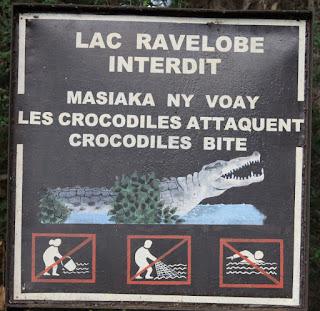 Original egg of the Elephant Bird.
Original egg of the Elephant Bird. Extinct since the 17th centuary,
Extinct since the 17th centuary, the Elephant Bird was an 'endemic' of Madagascar.
the Elephant Bird was an 'endemic' of Madagascar. Roadworks on our way back from Berenty.
Roadworks on our way back from Berenty. Silk Oak is an Australian import but an important part of the building and cabenet making trades
Silk Oak is an Australian import but an important part of the building and cabenet making trades in Madagascar, shows beautiful blossom.
in Madagascar, shows beautiful blossom. One of the overloaded 'collective taxis' that ply between the larger towns and cities. They don't leave until full, so sometime there can be days of waiting!
One of the overloaded 'collective taxis' that ply between the larger towns and cities. They don't leave until full, so sometime there can be days of waiting!Wednesday 3rd November 2010
We returned to Antananarivo (the capital) from Fort Dauphin on yet another reschedueled flight requiring an early start. The benefit of course that we were able to do more with our day so after breakfast we headed for the 'privately owned' Nature Reserve close to the center of the city. While this featured water birds in the main there was yet another 'endemic' to be viewed by way
of Madagascar Squacco Heron and the long awaited Hottentot Teal that has eluded me during several African excussions. There was also the more familiar represented by a lone Moorhen plus photo opportunities galour. After lunch the majority wanted to go 'shopping' (flippin' shopping, you can do that in Weymouth if you want to) which also had it's moment of interest. A huge line of ethnic stalls lined a very red, muddy river into which plunged a couple of local youths. Each had a length of string clutched between their teeth and after slapping the surface of the water simply plunged from view. On returning to the surface they both had caught a perch like fish with their bare hands and deftly threaded it onto the string, repeating the process over the following 30 minutes. When they finally came to shore they had both caught about 20 fish each and immediately raced off to sell them!
of Madagascar Squacco Heron and the long awaited Hottentot Teal that has eluded me during several African excussions. There was also the more familiar represented by a lone Moorhen plus photo opportunities galour. After lunch the majority wanted to go 'shopping' (flippin' shopping, you can do that in Weymouth if you want to) which also had it's moment of interest. A huge line of ethnic stalls lined a very red, muddy river into which plunged a couple of local youths. Each had a length of string clutched between their teeth and after slapping the surface of the water simply plunged from view. On returning to the surface they both had caught a perch like fish with their bare hands and deftly threaded it onto the string, repeating the process over the following 30 minutes. When they finally came to shore they had both caught about 20 fish each and immediately raced off to sell them!
 Black-crowned Night Heron (juvenile)
Black-crowned Night Heron (juvenile) Madagascar Squacco Heron, distant but a welcome addition to the list.
Madagascar Squacco Heron, distant but a welcome addition to the list. Madagascar Wagtail
Madagascar Wagtail

 Breeding plumage Cattle Egrets making a striking pose.
Breeding plumage Cattle Egrets making a striking pose. Dragonfly
Dragonfly Red-billed Teal
Red-billed Teal Butterfly Sp
Butterfly Sp Some idea of the diversity of birdlife around the lake.
Some idea of the diversity of birdlife around the lake. Another Madagascar Harrier
Another Madagascar Harrier White-faced Whistling Duck
White-faced Whistling Duck White-faced Whistling Duck
White-faced Whistling Duck The only Moorhen of the trip so far, with Whistling Ducks.
The only Moorhen of the trip so far, with Whistling Ducks. Comb or Knob-billed Duck
Comb or Knob-billed Duck Distant Hottentot Teal but an addition to the 'life list'.
Distant Hottentot Teal but an addition to the 'life list'. Flower, thought to be of the Salvia family.
Flower, thought to be of the Salvia family. Diomorphic Heron (white morph)
Diomorphic Heron (white morph)

 Squacco Herons and nest.
Squacco Herons and nest.





















































